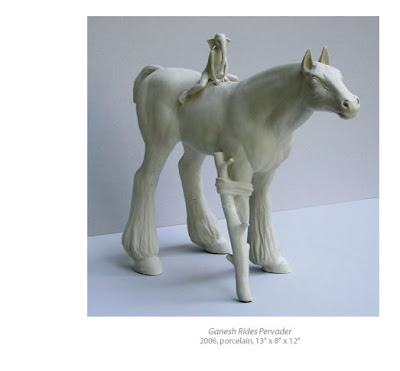Styrofoam cups are something you buy in bulk for your party to fill with sodas for all of your friends. But Cheeming Boey, an animator and game designer, has taken Styrofoam cups to a whole new level. He uses a regular sharpie to draw on regular Styrofoam cups, and what comes from that is something interesting and beautiful; the Styrofoam cup is no longer a plain discardable object. He is also quite humorous at times. And just so my viewer isn’t confused, some of the pictures I show may look like two cups but it is only one held up to a mirror to help show the detail on the other side of the cup.
red
“When I was a kid, I had a balloon that flew out to the streets. I chased it and was almost hit by a car. If I got hit by a car, no one would be drawing on foam cups” -Boey
I personally feel that the quote above by Boey is a big part of this piece. Right away you can see that these little creates are doing everything that they can in order to reach this red balloon, and when he relates this image to himself, it becomes all the more touching. Plus, he is right! No one would be drawing on Styrofoam cups! Boey has not created much difference in the quality and thickness of line in this drawing, but I think it works here for the simplicity of the message it sends. It almost one feel sad when looking at how close they are to getting that red balloon that they obviously desire and not being able to reach it. I think the level of danger, like almost getting hit by the car, is shown too; one of the little creates is falling and a few are helping it. Sometimes when we desire something so much we often look over the elements of danger we are putting ourselves in.
khünbish
"khünbish" means ‘not human’left to right : "naranbaatar", "katsuro", "sha baihu" amd "deathcoil".
drawn over a 3 month period
This one clearly has some under laying Asian mythologies that the viewer may not understand unless they have studied that subject. The use of like here seems to vary differently in quality than some of his other pieces. This is also clearly using line to show a 3-D/curving nature of the objects. I chose to show this one because I think it is incredible that he took about 3 months to create this piece as a whole four cups. The attention to detail is incredible, and I liked how he tied them together with that curling object/line that is repetitive on the cups. The simplicity of setting them on the pieces of cork is a great way to tie them together and bring each cup into the entirety of the four cups together.
fedor emelianenko
“Achieving likeness was tough, because unlike what I was taught in art school, where we focused on nailing down big shapes before working on finer details, I had to work in reverse, because I am drawing directly with a sharpie. So I started with his left eye, and I slowly worked outwards. The curved surface made his head look longer than it is wide, but it really isn't when seen in person. I wanted to give up after working on just the face after a whole weekend. Then just when I was about to, a guy at the cafe walked by and said, "Whoa! It’s Fedor!" I guess I wasn't doing too bad a job, so I kept on going.” -BoeyI chose this piece because of what Cheeming Boey said about his trials and triumphs when going through the process of creating this piece. It makes me realize that even some of the best people and artists have to go through a hard time and figuring out your materials just like everyone else. It makes them seem more human to me. He did this as a tribute to the martial arts fighter Fedor. He uses a stippling technique on this cup compared to others which mostly use line. I think this was a great challenge for him, and I wanted to show that challenging yourself can sometimes be a great victory.
buenos vientos
“I used to think that the smoke that came out of a train's chimney and a ship's funnel became clouds. My imagination was much more fantastic back then, before science ruined it.”This is another piece in which I feel that his personal story/quote makes the piece. And it also just made me giggle, and I think that any piece of art that makes you feel something should be shared. Here he uses a good use of different qualities of line, and when you look closely at the dots, they are so precise that they make their own line as well. Although there is a point where science and art can emerge, it is often thought they clearly butt heads, and I think it is great that Boey is confronting this and making it personal to himself again.
second best
This one has great use of the sharpie and the sharp contrasts between black and white are really apparent. There is also a good attention to detail were he has drawn the city, the bridge, and I love the sweet simplicity of the lamps on the bridge. This one not only made me laugh, but also made me feel sad! This little boy (who may have finally gotten that red balloon!) is being stood up by this giant balloon. In this world, there is always going to be something better. And I think that is what Boey was trying to say.
Hope you enjoyed the transformation of styrofoam cups as much as I did!

















